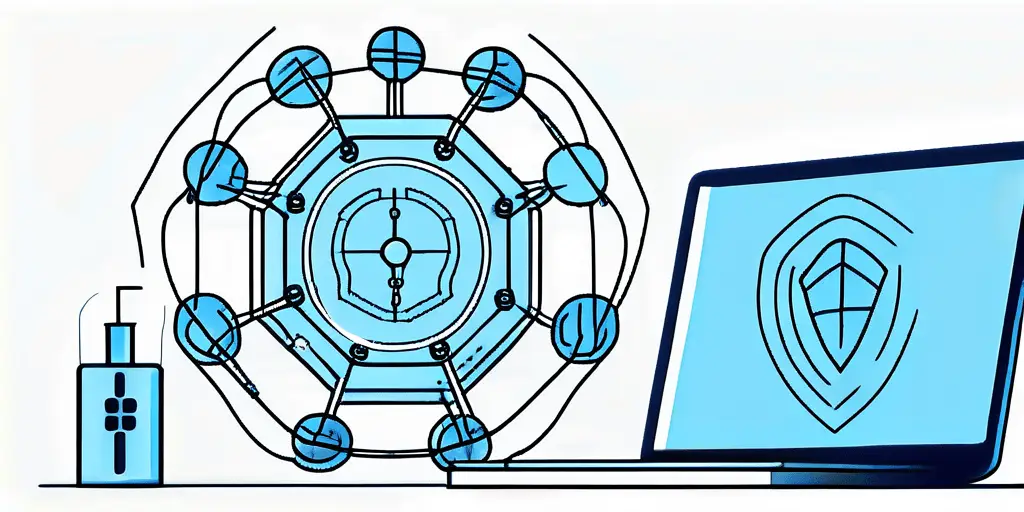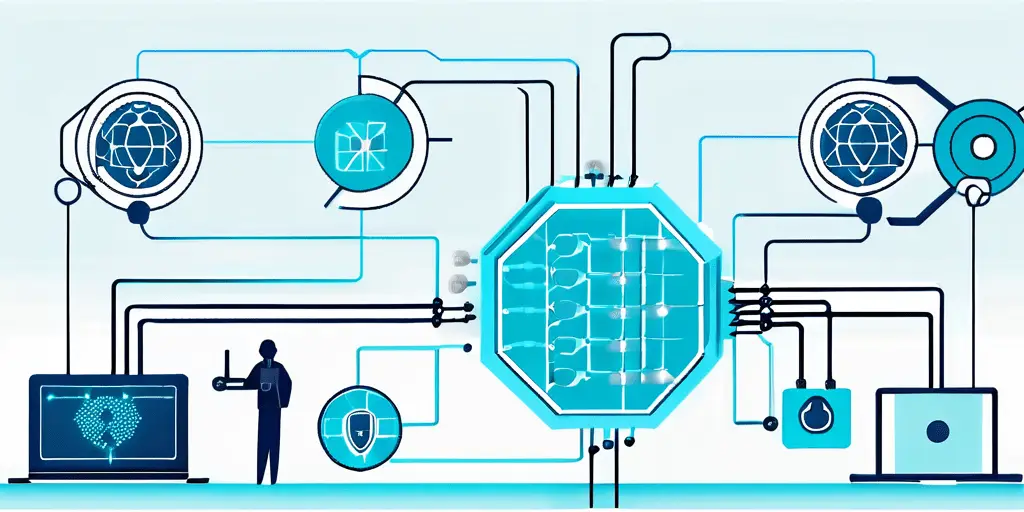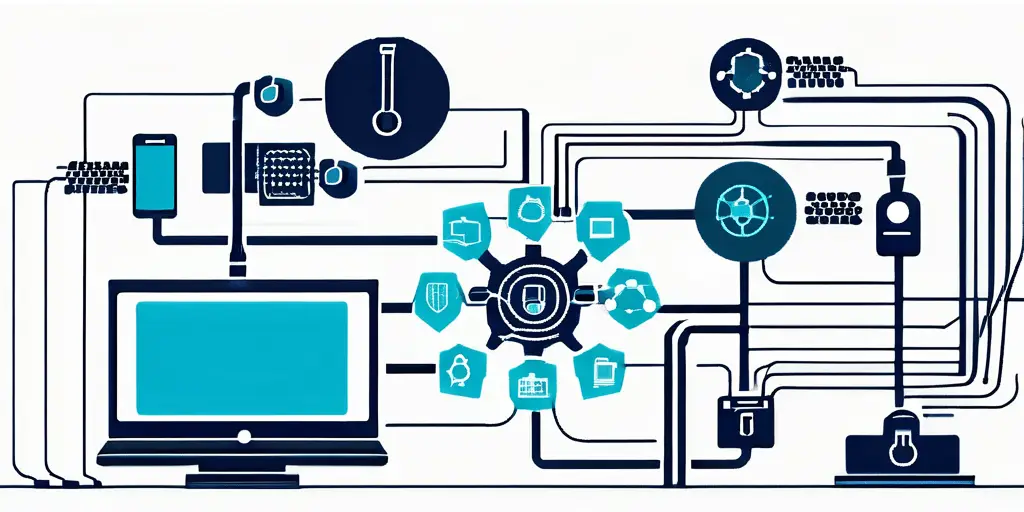Understanding LoRaWan and Its Importance in Medical Devices
LoRaWan, which stands for Long Range Wide Area Network, is a low-power wireless communication protocol specifically designed for the Internet of Things (IoT). It enables long-range communication between devices, allowing medical devices to transmit and receive data over long distances.
With the rise of telemedicine and remote patient monitoring, the role of LoRaWan in healthcare has become increasingly significant. This technology facilitates the seamless transmission of critical health data from patients to healthcare providers, enabling timely interventions and personalized care.
The Role of LoRaWan in Healthcare
LoRaWan has the potential to revolutionize healthcare by enabling remote monitoring, real-time data analysis, and improved patient care. It allows medical devices such as wearable monitors to transmit vital health information to doctors and caregivers, even from a distance.
LoRaWan enhances healthcare systems’ efficiency by enabling predictive medical equipment maintenance. By monitoring the performance and status of devices in real-time, healthcare facilities can proactively address issues, reducing downtime and ensuring uninterrupted patient care.
Key Features of LoRaWan Technology
One of LoRaWan’s critical features is its long-range capability, which allows medical devices to communicate across great distances, ensuring seamless connectivity regardless of location. Additionally, LoRaWan operates on low power, making it ideal for battery-operated devices.
The secure and reliable nature of LoRaWan communication ensures the privacy and integrity of sensitive medical data. This encryption and authentication mechanism protects against potential cyber threats, safeguarding patient information and upholding confidentiality in healthcare settings.
Identifying LoRaWan Vulnerabilities
While the benefits of using LoRaWan in medical devices are clear, it is essential to recognize that with any technological advancement comes the potential for vulnerabilities. Understanding and addressing these vulnerabilities is crucial to ensure the safety and security of both patients and their medical data.

Regarding LoRaWan vulnerabilities, one must also consider the potential threat of replay attacks. In a replay attack, a malicious actor intercepts data transmissions and retransmits them, potentially causing confusion or unauthorized actions within the network. This type of attack could compromise the integrity of medical data and lead to incorrect diagnoses or treatments.
Common LoRaWan Security Issues
One common security issue with LoRaWan is the lack of encryption. Without encryption, data transmitted between medical devices and the network could be intercepted and compromised, posing a significant risk to patient privacy. Additionally, as LoRaWan operates on an unlicensed spectrum, it is susceptible to jamming and interference.
Another critical security concern in LoRaWan networks is the lack of proper authentication mechanisms. Without robust authentication protocols, malicious actors could potentially impersonate legitimate devices or gateways, gaining unauthorized access to sensitive medical data or disrupting the network’s operations.
Potential Risks of LoRaWan Vulnerabilities
The potential risks of LoRaWan vulnerabilities are vast and can have severe consequences. Unauthorized access to medical devices could lead to patient data tampering or manipulating device functionality, putting patients’ health and lives at risk. Moreover, unauthorized access to sensitive medical data could result in identity theft or malicious activities.
Stakeholders in the healthcare industry must stay vigilant and proactive in identifying and mitigating LoRaWan vulnerabilities. By implementing robust encryption, authentication, and intrusion detection mechanisms, the risks associated with using LoRaWan in medical devices can be significantly reduced, ensuring the integrity and confidentiality of patient data.
The Intersection of LoRaWan and Medical Device Cybersecurity
The intersection of LoRaWan and medical device cybersecurity is a critical area of concern. Understanding how vulnerabilities in LoRaWan can impact medical devices is essential for implementing effective cybersecurity measures.

When exploring the relationship between LoRaWan and medical device cybersecurity, it is crucial to consider the unique challenges posed by the healthcare industry. Medical devices often handle sensitive patient data and play a vital role in patient care, making them attractive cyberattack targets. As the healthcare sector increasingly adopts Internet of Things (IoT) technologies like LoRaWan for connectivity and data transmission, the need to address cybersecurity risks becomes even more pressing.
How LoRaWan Vulnerabilities Affect Medical Devices
LoRaWan vulnerabilities can directly impact the functionality and safety of medical devices. For instance, a compromised wearable monitor could provide inaccurate health data to healthcare professionals, leading to incorrect diagnoses and potentially harmful treatment decisions.
The interconnected nature of medical devices within healthcare facilities can amplify the consequences of a cybersecurity breach. A vulnerability in one device could potentially compromise an entire network of devices, putting patient safety and data security at risk.
The Consequences of Cybersecurity Breaches in Healthcare
Cybersecurity breaches in healthcare can have far-reaching consequences. Apart from the immediate impact on patient care, such breaches can erode patient trust in the healthcare system and result in reputational damage for healthcare providers. Additionally, the financial cost of data breaches can be substantial, with the average cost being millions.
Regulatory bodies such as the Health Insurance Portability and Accountability Act (HIPAA) in the United States impose strict requirements for protecting patient information. A cybersecurity breach that exposes patient data leads to financial repercussions, regulatory fines, and potential legal action against healthcare organizations.
Mitigating the Impact of LoRaWan Vulnerabilities
To mitigate the impact of LoRaWan vulnerabilities, it is crucial to implement robust cybersecurity measures that address the specific risks associated with this technology. With the increasing adoption of Internet of Things (IoT) devices utilizing LoRaWan technology, securing these devices against potential cyber threats has become a top priority for organizations and individuals alike.
One key consideration in enhancing LoRaWan security is establishing secure key management practices. Proper key management is essential for ensuring the confidentiality and integrity of data transmitted over LoRaWan networks. By securely generating, storing, and distributing encryption keys, organizations can significantly reduce the risk of unauthorized access and data breaches.
Strategies for Enhancing LoRaWan Security
One strategy for enhancing LoRaWan security is implementing end-to-end encryption. Encrypting data at both ends of communication ensures that only authorized parties can access and decipher the transmitted data. Additionally, regular vulnerability assessments and penetration testing can help identify and address any weaknesses in the system. Continuous monitoring of network traffic and behavior can also aid in the early detection of suspicious activities, allowing for timely response and mitigation.
Future Directions in Medical Device Cybersecurity
Medical device cybersecurity continually evolves to keep pace with technological advancements and emerging threats. Innovations such as machine learning and artificial intelligence are being explored to enhance the detection and prevention of cyber attacks. Policymakers and regulatory bodies also play a vital role in shaping the future of medical device cybersecurity by developing and enforcing appropriate regulations. Collaboration between industry stakeholders, cybersecurity experts, and healthcare professionals is essential to establish comprehensive security standards and best practices for medical devices.
The Role of Regulatory Bodies in Ensuring Cybersecurity

Current Regulations on Medical Device Cybersecurity
Currently, several regulatory bodies, such as the U.S. Food and Drug Administration (FDA) and the European Union’s Medical Device Regulation (MDR), have issued guidelines to address the cybersecurity of medical devices. These regulations outline requirements for manufacturers to assess and mitigate risks associated with their devices.
The Need for Stronger Cybersecurity Policies in Healthcare
While existing regulations are a step in the right direction, stronger cybersecurity policies are needed in healthcare. Collaboration between regulatory bodies, healthcare providers, and technology manufacturers is crucial to developing comprehensive and effective cybersecurity measures that safeguard patient health and data.
One area that requires further attention is the continuous monitoring and updating of cybersecurity regulations. As technology evolves rapidly, so do the threats that target medical devices and networks. Regulatory bodies must stay up-to-date with the latest advancements in cyber threats and adapt their guidelines accordingly. This proactive approach will ensure that the regulations remain relevant and effective in addressing emerging cybersecurity challenges.
Regulatory bodies can also be pivotal in promoting cybersecurity awareness and education within the healthcare industry. By organizing workshops, seminars, and training sessions, they can equip healthcare professionals with the knowledge and skills necessary to effectively identify and respond to cyber threats. This collaborative effort will create a culture of cybersecurity consciousness where every individual involved in the healthcare ecosystem understands their role in safeguarding patient information and maintaining the system’s integrity.
In conclusion, while regulatory bodies have made significant strides in addressing medical device cybersecurity, there is still work to be done. The ever-evolving nature of cyber threats necessitates continuously enhancing regulations and promoting cybersecurity awareness within the healthcare industry. By working together, regulatory bodies, healthcare providers, and technology manufacturers can ensure a secure future for medical devices, protecting patient safety and preserving the confidentiality of sensitive medical data.
As the healthcare sector grapples with the complexities of LoRaWan vulnerabilities and medical device cybersecurity, the need for a trusted partner to navigate these challenges becomes paramount. With its veteran-owned heritage and commitment to cybersecurity excellence, Blue Goat Cyber stands ready to assist. Our tailored B2B services, including medical device cybersecurity, penetration testing, and HIPAA and FDA standards compliance, are designed to protect your business and patients from cyber threats. Don’t let vulnerabilities compromise your operations or patient safety. Contact us today for cybersecurity help and take the first step towards a secure and compliant digital healthcare environment with Blue Goat Cyber.


